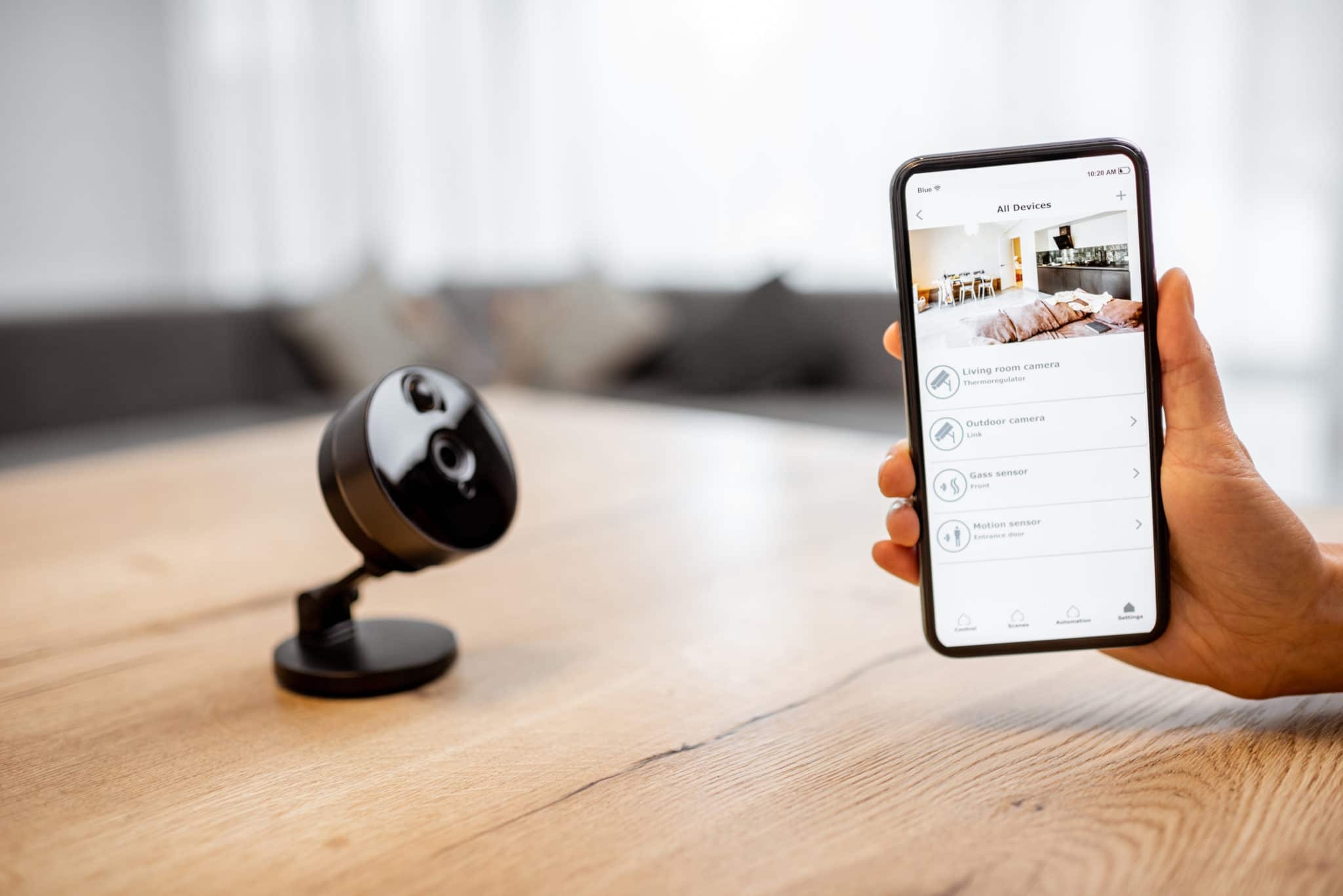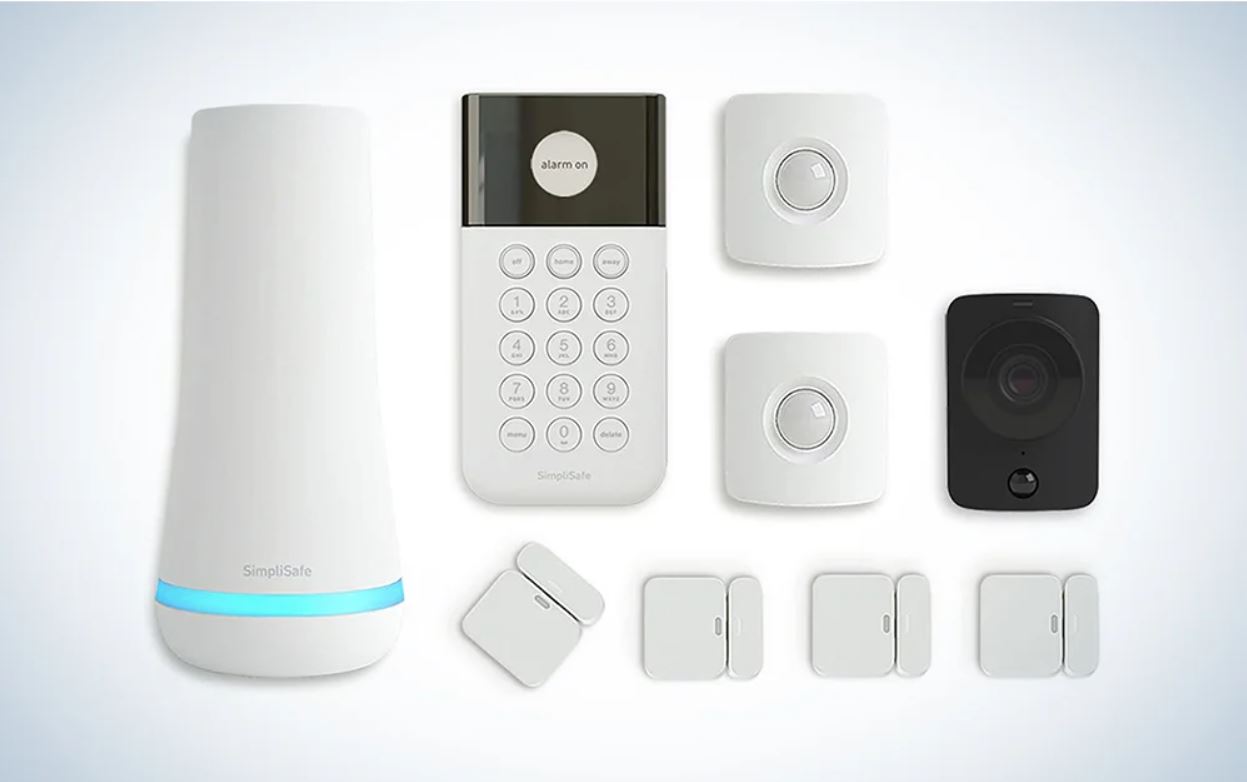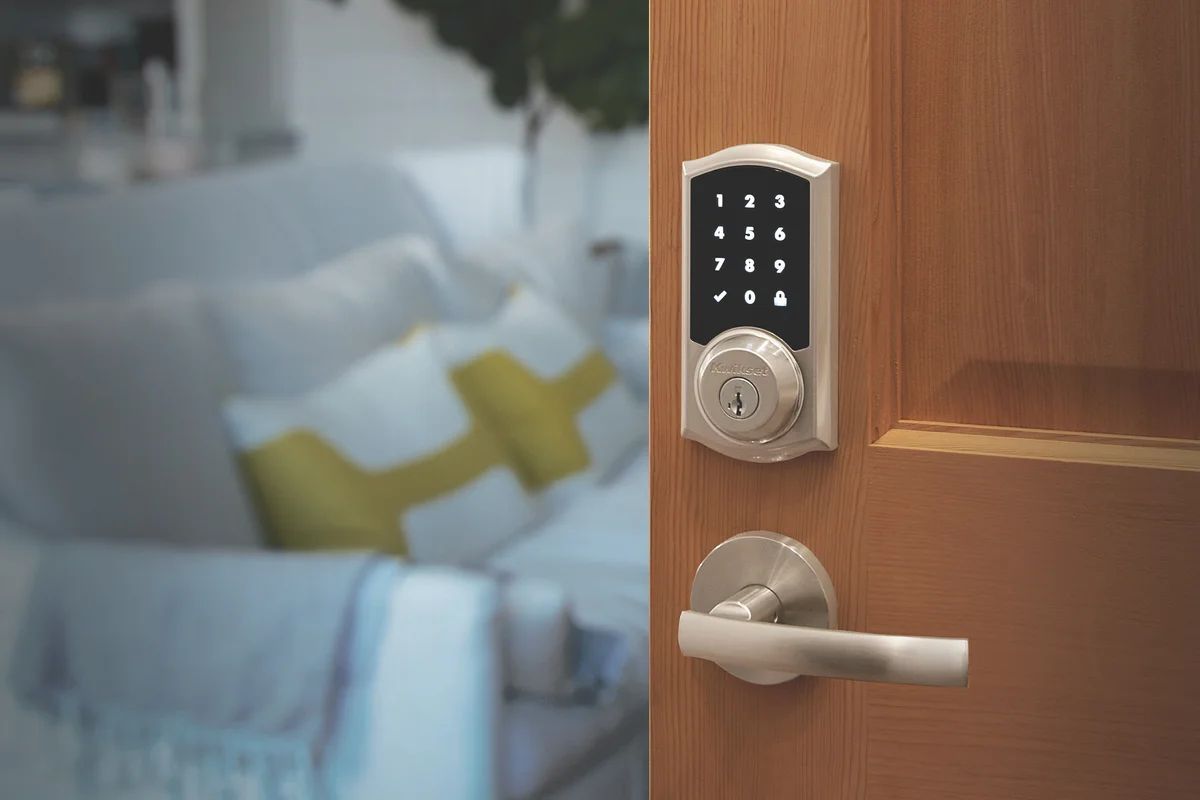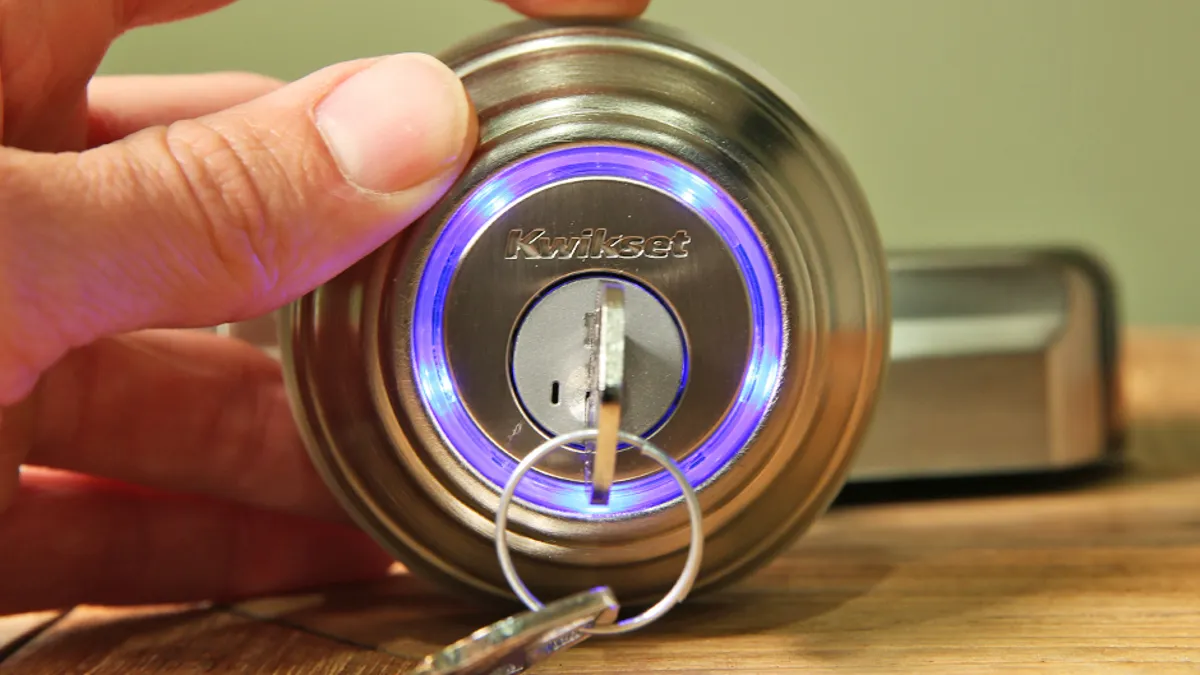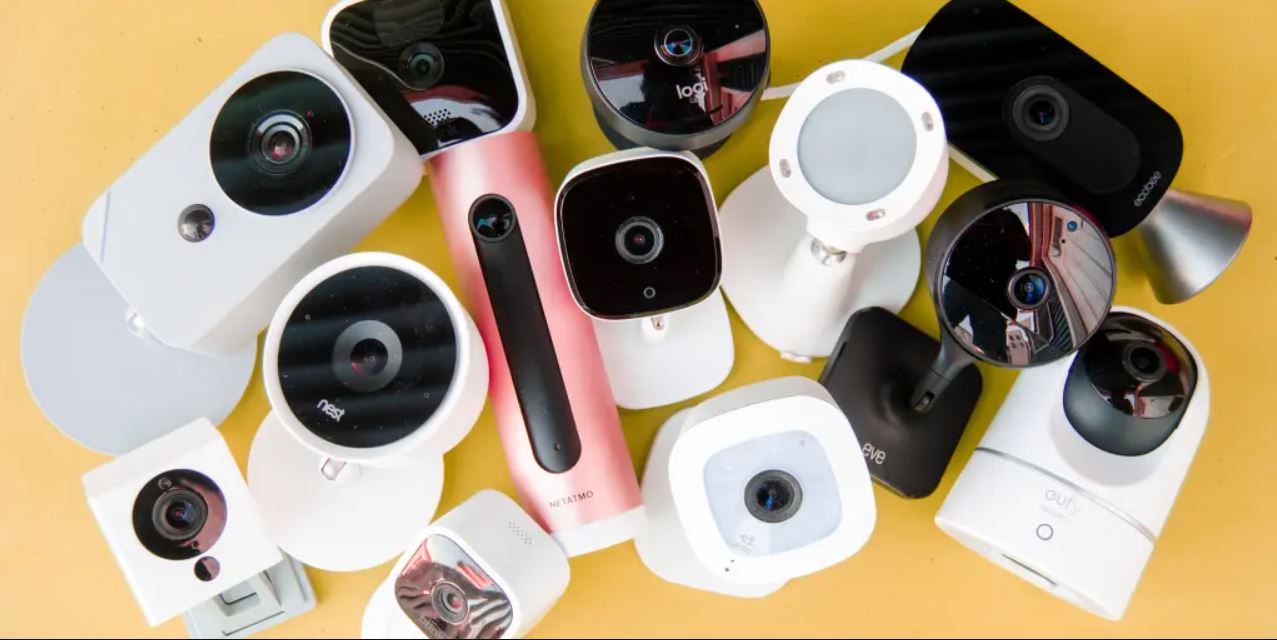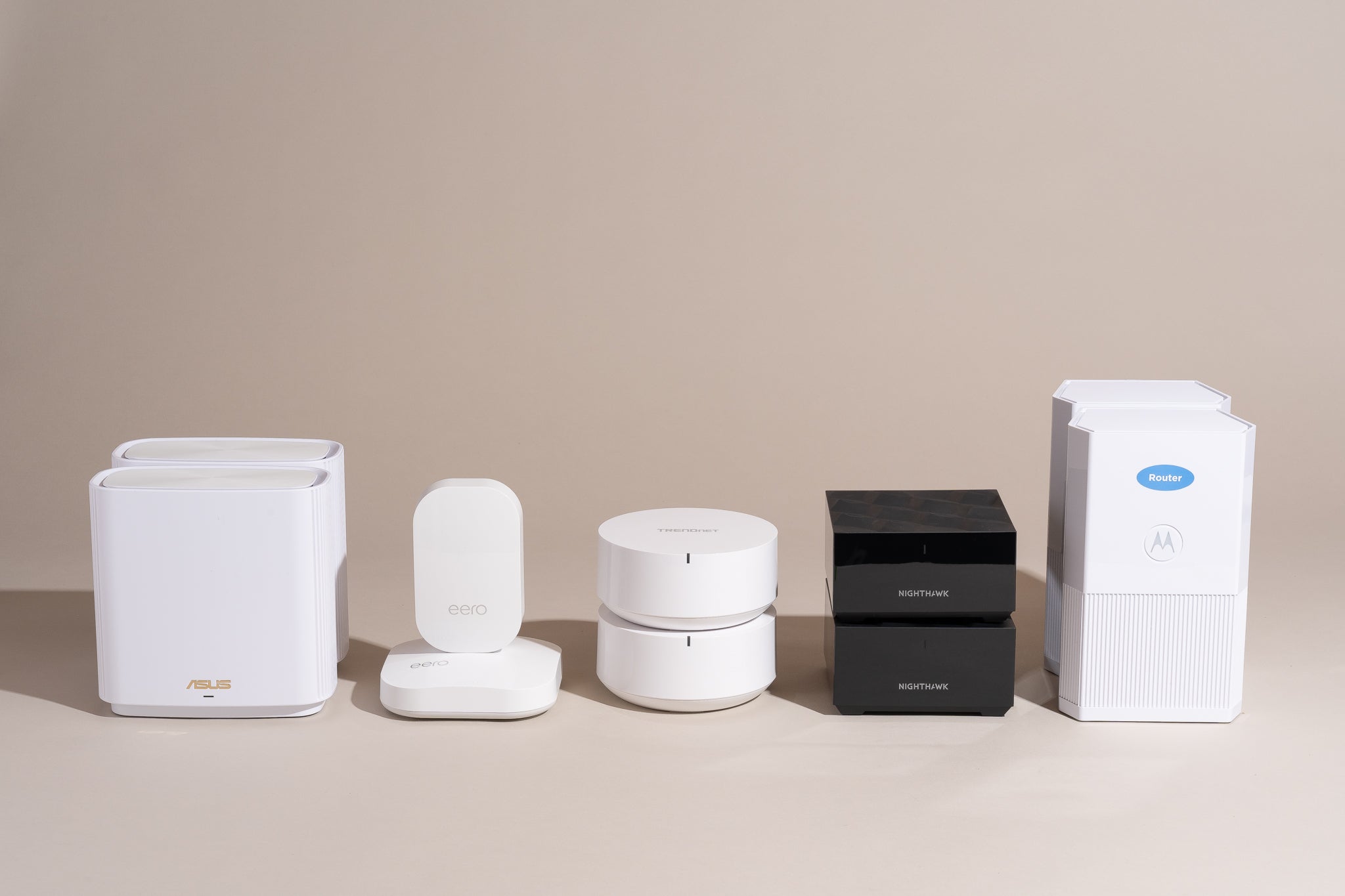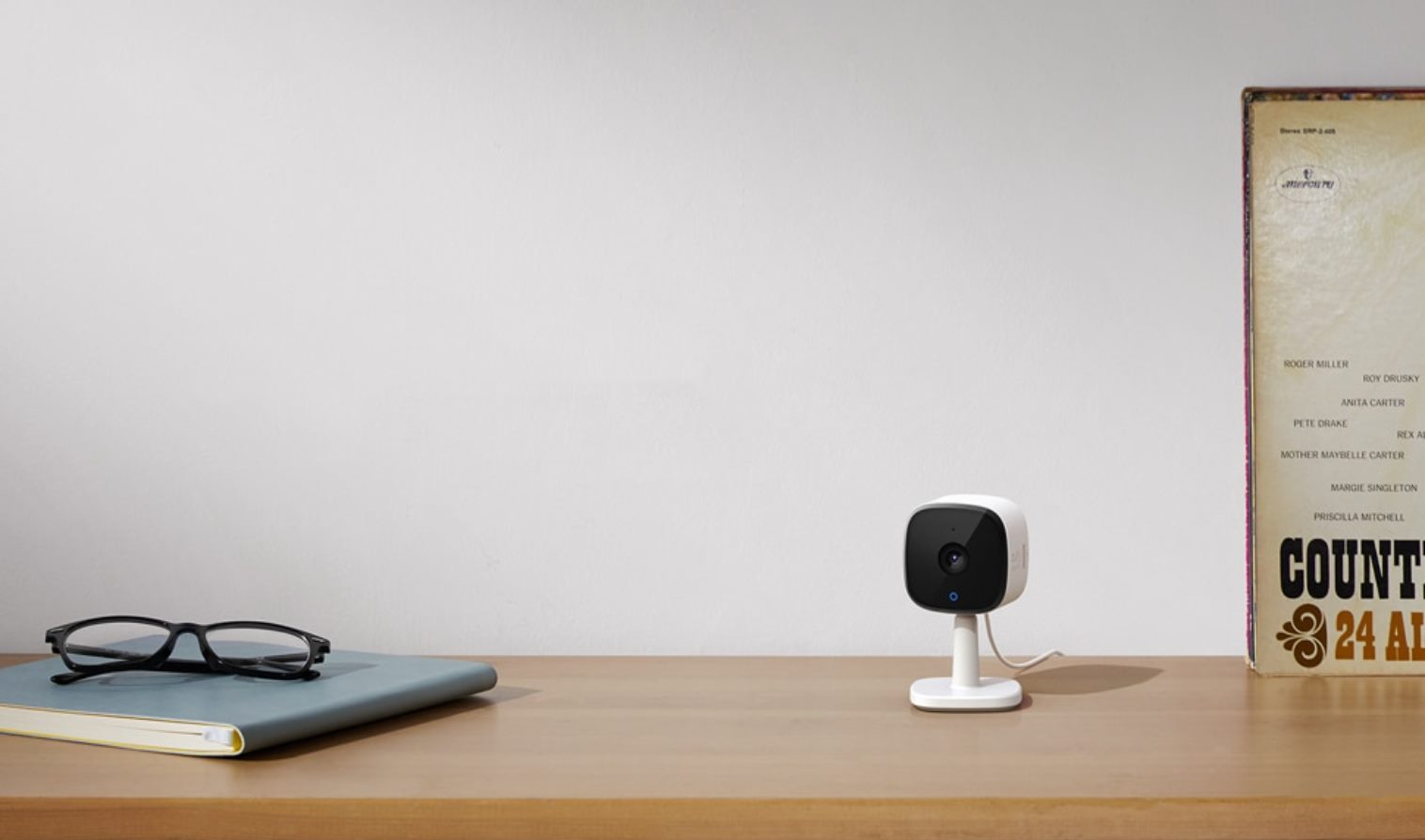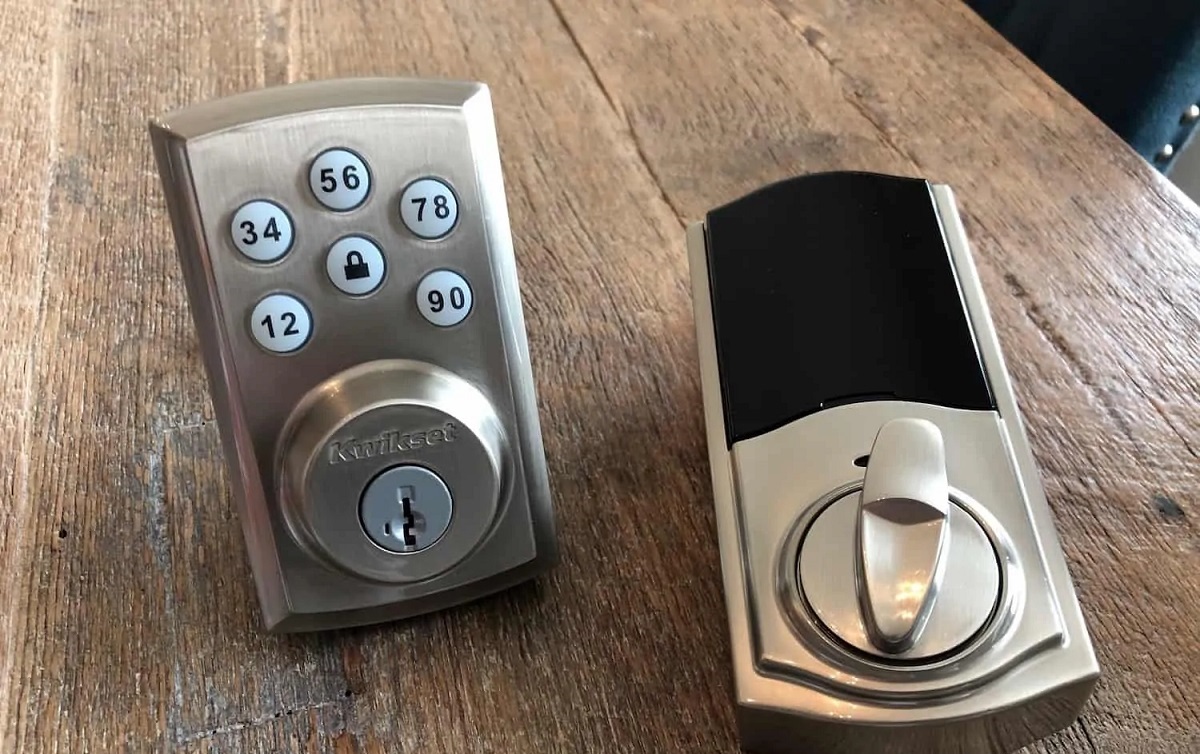Introduction
When it comes to protecting your home and loved ones, having a reliable and efficient home security system is crucial. With advancements in technology, there are now numerous options available for homeowners to ensure their safety and peace of mind. However, with so many choices on the market, it can be overwhelming to determine which features are essential and what to look for in a home security system.
In this article, we will explore the top features that you should consider when choosing a home security system. From security cameras and motion sensors to 24/7 monitoring services and integrated smart home devices, we will discuss the essential components that can provide comprehensive protection for your home.
The primary goal of a home security system is to deter potential intruders and provide you with early detection and alerts in case of any suspicious activity. Therefore, it is essential to invest in a system that offers robust security features and advanced technology.
In addition to protecting against burglary, some home security systems also offer environmental monitoring capabilities. These systems can detect smoke, carbon monoxide, and water leaks, providing an added layer of safety for your family and property. Additionally, remote access via a mobile app allows you to control and monitor your security system from anywhere, providing peace of mind even when you’re away from home.
Determining your specific security needs and budget is crucial before making a decision. By understanding the various features and options available, you can select a home security system that meets your requirements and enhances the overall safety of your home.
In the following sections, we will delve into the specific features that you need to consider when choosing a home security system. By the end of this article, you will have a comprehensive understanding of what to look for, enabling you to make an informed decision and protect your home and loved ones effectively.
Security Cameras
Security cameras are a fundamental component of any home security system. They act as a deterrent to potential intruders while allowing you to monitor your property remotely. When choosing a home security system, it is crucial to consider the quality, coverage, and features of the security cameras included.
High-resolution cameras that capture clear images and videos are essential for effective surveillance. Look for cameras with at least 1080p resolution and a wide viewing angle to ensure comprehensive coverage of your property. Additionally, features such as night vision capability are vital to provide clear footage even in low-light conditions.
Consider the number of cameras needed based on the size and layout of your home. Outdoor cameras should be weatherproof and have adjustable mounting options to capture different angles. Indoor cameras can be discreetly placed to monitor specific areas, such as entryways or valuable belongings.
To enhance the functionality of security cameras, look for systems that offer motion detection and intelligent alerts. These features enable the cameras to detect and notify you of any suspicious activity in real-time. Some advanced systems even offer facial recognition technology, allowing you to easily identify familiar faces and receive notifications when unknown individuals are detected.
Cloud storage is an essential feature to consider as it provides a secure way to store and access your camera footage from anywhere. Look for systems that offer sufficient storage capacity or the option to expand storage based on your needs. Local storage options, such as DVR or NVR systems, provide an additional layer of security by keeping footage offline.
Lastly, consider the integration capabilities of the security cameras with other smart home devices. Many systems allow you to connect your cameras with voice assistants, allowing hands-free control and real-time viewing on compatible devices.
In summary, when choosing security cameras for your home security system, prioritize high resolution, wide coverage, and essential features like motion detection and cloud storage. By selecting the right cameras, you can enhance the security of your home and have peace of mind knowing that your property is effectively monitored and protected.
Motion Sensors
Motion sensors are a crucial component of any comprehensive home security system, providing an extra layer of protection against intruders. These sensors detect movement within their range and can trigger alarms or notifications to alert you of any potential threats. When considering a home security system, it is important to evaluate the quality and effectiveness of the motion sensors included.
Look for motion sensors that have a wide detection angle and a long detection range to cover the desired areas effectively. For outdoor use, ensure that the sensors are weatherproof and durable to withstand various environmental conditions. Indoor sensors should be compact and discreet to blend seamlessly with your home’s decor.
Consider the sensitivity and customization options of the motion sensors. Adjustable sensitivity allows you to set the level of movement required to trigger an alert, minimizing false alarms. Some advanced systems even offer pet-friendly motion sensors that can differentiate between human and animal movement, so your pets won’t set off false alarms.
Integration with other components of the home security system is another critical aspect. Look for systems that enable you to pair motion sensors with security cameras, alarms, and smart home devices. This integration allows for more comprehensive monitoring and automation. For example, if motion is detected in a specific area, the system can automatically turn on lights or activate cameras to capture footage.
Consider the power source and battery life of the motion sensors. Wireless sensors powered by long-lasting batteries provide flexibility in placement and require less maintenance. Some systems even offer rechargeable batteries or the option to connect sensors directly to power sources for continuous operation.
Lastly, evaluate the ability of the motion sensors to integrate with the home security system’s control panel or mobile app. This integration allows you to control and monitor the sensors remotely, receive alerts, and view real-time activity logs. It also enables you to customize settings and create automated actions based on motion events.
In summary, selecting reliable and effective motion sensors is essential for a robust home security system. Prioritize wide coverage, adjustable sensitivity, and integration capabilities with other components. By choosing the right motion sensors, you can enhance the security of your home and have peace of mind knowing that any movement within your property will be promptly detected and responded to.
Door and Window Sensors
Door and window sensors are a critical component of any home security system, providing initial defense against unauthorized entry. These sensors are designed to detect when doors or windows are opened, triggering an alarm or alerting you of any potential breaches. When considering a home security system, it is essential to evaluate the quality and functionality of the door and window sensors included.
Look for sensors that are easy to install and can be placed discreetly on doors and windows. Some sensors come with adhesive backing, while others may require screws for more secure installation. Consider the compatibility of the sensors with different types of doors and windows, including sliding doors, double-hung windows, and even garage doors.
Evaluate the detection range and sensitivity of the sensors. They should be able to detect even the slightest movement or opening of doors or windows. Adjustable sensitivity allows you to customize the response of the sensors based on your specific needs and helps minimize false alarms.
Integration capabilities with other components of the home security system are crucial. Look for systems that allow you to connect door and window sensors with security cameras, alarms, and control panels. This integration enables you to create customized rules, such as automatically arming the system when all doors and windows are closed or receiving real-time alerts when a door or window is opened.
Consider the ability of the sensors to differentiate between normal activities, such as opening a door to let pets out, and suspicious activity. Some advanced sensors use advanced algorithms and machine learning to learn your daily routines and distinguish between normal and abnormal behavior, reducing false alarms.
Evaluate the power source and battery life of the door and window sensors. Wireless sensors powered by long-lasting batteries provide convenience and flexibility in placement. Verify if the system provides low-battery notifications to ensure the sensors are always operational.
Lastly, consider the integration with a mobile app or control panel interface. This integration allows you to monitor the status of doors and windows, receive alerts in real-time, and remotely control the security system. It also enables you to view a history log of door and window activities, providing valuable information for security purposes.
In summary, door and window sensors are crucial for an effective home security system. Prioritize ease of installation, adjustable sensitivity, and integration capabilities with other components. By ensuring proper coverage and functionality of the door and window sensors, you can enhance the security of your home and have peace of mind knowing that any unauthorized access will be promptly detected and responded to.
Alarm System
An alarm system is a core component of any reliable home security system, providing a loud and attention-grabbing signal to deter intruders and alert you and your neighbors of a potential break-in. When choosing a home security system, it is crucial to evaluate the quality, functionality, and effectiveness of the alarm system included.
Look for an alarm system that offers loud sirens with a high decibel rating. A powerful siren can effectively deter intruders and attract the attention of neighbors or passersby. Consider the range of the alarm system, ensuring that it can be heard throughout your property and potentially beyond.
Evaluate the options for customizing the alarm system. Look for systems that allow you to set different modes, such as home mode, away mode, or night mode, each with its own configurations for sensor sensitivity and alarm activation. This customization ensures that the alarm system is flexible and tailored to your specific needs.
Consider the integration capabilities of the alarm system with other components of the home security system. Integration with security cameras, door/window sensors, and motion sensors allows for a more comprehensive and synchronized response to any potential threats. For example, when an alarm is triggered, the system can automatically activate cameras to capture footage and send notifications to your mobile device.
Evaluate the backup power options of the alarm system. Power outages or tampering with the electrical supply should not render the alarm system inoperable. Look for systems with battery backup to ensure uninterrupted security coverage in any situation.
Consider the availability of additional features, such as panic buttons or duress codes. These features provide an additional layer of protection in emergencies, allowing you to trigger the alarm discreetly and summon help without alerting intruders.
Lastly, evaluate the ease of arming and disarming the alarm system. Look for systems with user-friendly interfaces, keypads, or mobile app controls that allow you to easily set the alarm system according to your needs. Some advanced systems even offer geofencing capabilities, automatically arming the system when you leave and disarming it when you return based on your smartphone’s location.
In summary, a robust and reliable alarm system is essential for an effective home security system. Prioritize loud sirens, customization options, integration capabilities, backup power, and ease of use. By choosing the right alarm system, you can enhance the security of your home and have peace of mind knowing that any potential threats will be deterred and promptly responded to.
Smart Locks
Smart locks have revolutionized home security by providing convenient and secure access control to your property. With the ability to lock and unlock your doors remotely, grant temporary access to visitors, and receive notifications of door activity, smart locks offer enhanced convenience and peace of mind. When considering a home security system, it is important to evaluate the quality, functionality, and integration capabilities of the smart locks included.
Look for smart locks that are compatible with your existing door hardware and can be easily installed or retrofitted. Consider the type of connectivity the smart lock offers, whether it’s Bluetooth, Wi-Fi, or Z-Wave. Bluetooth connectivity allows you to control the lock within close range, while Wi-Fi connectivity enables remote access from anywhere with an internet connection.
Evaluate the security features of the smart locks. Look for models that offer encryption, two-factor authentication, and tamper alerts to ensure the highest level of protection for your home. Some advanced smart locks also have built-in alarm systems that will sound if forced entry is attempted.
Consider the options for granting and managing access to your home. Look for smart locks that allow you to create unique access codes for family members, friends, or service providers. This feature provides a convenient way to grant temporary access and allows you to track who enters and exits your home at all times. Some smart locks even offer integration with voice assistants, allowing you to lock and unlock your doors with simple voice commands.
Integration with other components of the home security system is another significant aspect to consider. Look for smart locks that can be connected to security cameras, door/window sensors, and alarm systems. This integration enables a seamless and synchronized response to security events. For example, when the alarm system is triggered, the smart lock can automatically lock all doors to secure the premises.
Evaluate the power source and battery life of the smart locks. Wireless locks powered by long-lasting batteries provide convenience and uninterrupted operation. Look for smart locks that provide low-battery notifications to ensure that you are always aware when it’s time to replace the batteries.
Lastly, consider the ease of use and user-friendly interface of the smart locks. Look for locks that offer intuitive mobile apps or keypads for easy control and customization. Some smart locks even offer geofencing capabilities, automatically unlocking the door when you approach and locking it when you leave based on your smartphone’s location.
In summary, smart locks provide convenience, security, and enhanced access control for your home. Prioritize compatibility, security features, access management options, integration capabilities, power source, and user-friendly interface when choosing smart locks. By selecting the right smart locks, you can enhance the security of your home, simplify access control, and have peace of mind knowing that your property is protected.
24/7 Monitoring Services
24/7 monitoring services are a crucial component of a comprehensive home security system. These services provide constant surveillance and instant response to any security events, ensuring that you and your property are protected at all times. When considering a home security system, it is important to evaluate the quality, reliability, and effectiveness of the 24/7 monitoring services included.
Look for security companies that offer professionally monitored systems. Having trained security experts monitoring your home around the clock provides an added layer of reassurance and prompt assistance in case of emergencies. These professionals can quickly assess the situation, notify the appropriate authorities, and provide assistance or guidance as needed.
Consider the monitoring options available, such as landline, cellular, or broadband. Cellular monitoring is the most secure option, as it doesn’t rely on a physical connection and is less susceptible to tampering or power outages. Evaluate the coverage and signal strength in your area to ensure reliable communication with the monitoring center.
Evaluate the response time of the monitoring service provider. Quick response is crucial in emergencies, as it can significantly reduce the potential damage or harm. Look for providers that have a proven track record of prompt response and efficient communication with emergency services.
Consider the integration capabilities of the monitoring services with other components of the home security system. Seamless integration allows for synchronized monitoring and automation. For example, when a security sensor is triggered, the system can automatically alert the monitoring center, activate security cameras, or notify you via mobile app.
Look for additional monitoring services beyond intruder detection. Environmental monitoring services, such as smoke and carbon monoxide detection, can provide early warnings and help prevent potential disasters. Some monitoring services also offer medical alert systems, allowing you or your loved ones to receive immediate assistance in case of a medical emergency.
Evaluate the reputation and reliability of the monitoring service provider. Read reviews, check customer testimonials, and research their history in the industry. It’s important to choose a trusted provider with a solid reputation for delivering reliable and effective monitoring services.
Lastly, consider the cost and contract terms associated with the monitoring services. Compare different providers and packages to find the best value for your needs. Ensure that the terms of the contract are transparent, and there are no hidden fees or long-term commitments that may not align with your requirements.
In summary, 24/7 monitoring services provide constant surveillance and immediate response to security events. Prioritize professionally monitored systems, reliable communication options, quick response times, integration capabilities, additional monitoring services, reputation, and cost when choosing a monitoring service provider. By selecting the right monitoring services, you can ensure that your home is under constant watch, giving you peace of mind and the highest level of protection.
Mobile App Controls
Mobile app controls have become an integral part of modern home security systems, allowing homeowners to conveniently monitor and manage their security system using their smartphones or tablets. These apps provide remote access, real-time notifications, and control over various components of the security system. When considering a home security system, it is important to evaluate the quality, functionality, and user experience of the mobile app controls included.
Look for security systems that offer user-friendly mobile apps with intuitive interfaces. The app should be easy to navigate, with clear and organized menus that allow you to access different features and settings quickly. The ability to customize and personalize the app according to your preferences is also important for a seamless user experience.
Evaluate the range of features and controls available through the mobile app. Look for apps that allow you to arm and disarm the security system remotely, view live video feeds from security cameras, receive real-time alerts and notifications, and control other connected smart home devices. Having all these features accessible in one centralized app provides convenience and simplifies the management of your home security.
Consider the compatibility of the mobile app with different operating systems. Ensure that the app is available for iOS and Android devices, as these are the most widely used platforms. Compatibility with tablets and other mobile devices is also a factor to consider for those who prefer a larger screen interface.
Look for mobile apps that offer geofencing capabilities. Geofencing allows you to set virtual boundaries around your home, and when your smartphone crosses these boundaries, the app can automatically trigger different actions, such as arming or disarming the security system. This feature adds convenience and automation to your daily routine.
Evaluate the responsiveness and reliability of the mobile app. The app should provide smooth and quick access to various functions, with minimal lag or downtime. Look for apps that have a high rating and positive user reviews regarding performance and stability.
Consider the integration capabilities of the mobile app with other components of the home security system. Look for systems that allow you to connect and control security cameras, door/window sensors, motion sensors, and smart locks through the app. This integration provides a comprehensive and centralized control center for your home security.
Lastly, consider the security features and protocols implemented in the mobile app. Look for apps that utilize encryption, two-factor authentication, and secure communication channels to ensure the safety of your data and protect against unauthorized access.
In summary, mobile app controls offer convenient and remote management of your home security system. Prioritize user-friendly interfaces, a wide range of features, compatibility, geofencing capabilities, responsiveness, integration capabilities, and strong security protocols when selecting a system with mobile app controls. By choosing the right mobile app, you can have peace of mind knowing that you can access and control your home security system anytime, anywhere, with just a few taps on your smartphone.
Environmental Monitoring
Environmental monitoring is an important aspect of a comprehensive home security system, providing protection against potential hazards such as fires, carbon monoxide leaks, and water damage. These monitoring capabilities add an extra layer of safety and can help prevent significant property damage and health risks. When considering a home security system, it is crucial to evaluate the quality and effectiveness of the environmental monitoring features included.
Look for systems that offer smoke detectors and fire alarms as part of their environmental monitoring capabilities. These detectors should be sensitive enough to detect both fast-burning and slow-smoldering fires. Additionally, they should provide loud audible alerts as well as notifications to your smartphone, ensuring that you are aware of any potential fire emergencies, even when you are away from home.
Evaluate the carbon monoxide detection capabilities of the security system. Carbon monoxide (CO) is a silent killer, as it is odorless and colorless. Carbon monoxide detectors should be strategically placed throughout the home and should have alarm features that notify you when CO levels become dangerous. This early detection can save lives and prevent the harmful effects of carbon monoxide poisoning.
Consider the water leak detection and monitoring features of the security system. Water leaks can cause significant damage to your property if left undetected. Look for systems that offer sensors that can be placed near appliances, pipes, and other water sources to detect leaks. These sensors should be able to send immediate alerts to your smartphone when water is detected, allowing you to take prompt action to prevent further damage.
Evaluate the integration capabilities of environmental monitoring features with other components of the home security system. Look for systems that allow you to connect smoke detectors, carbon monoxide detectors, and water leak sensors to the central control panel or mobile app. This integration ensures that all alerts and notifications related to environmental monitoring are easily accessible and actionable in one centralized location.
Consider the power source and battery life of the environmental monitoring devices. Look for devices that have backup power options or long-lasting batteries to ensure continuous operation, even during power outages or when tampering with the electrical supply.
Lastly, consider the remote access and control options for environmental monitoring. Look for systems that allow you to remotely monitor the status of smoke detectors, carbon monoxide detectors, and water leak sensors through a mobile app or control panel. Remote access ensures that you can stay updated and take necessary actions, such as informing authorities or shutting off water supply, in case of any potential threats.
In summary, environmental monitoring plays a crucial role in a comprehensive home security system. Prioritize smoke detectors, carbon monoxide detectors, water leak detection, integration capabilities, power source, and remote access when selecting a system with environmental monitoring features. By choosing the right security system, you can enhance the safety of your home and prevent avoidable property damage and health risks associated with fires, carbon monoxide, and water leaks.
Integration with Smart Home Devices
Integration with smart home devices is a key feature to consider when selecting a home security system, as it allows for seamless automation and enhanced control of your entire home. Smart home devices, such as smart lights, thermostats, and voice assistants, can work in tandem with your security system to create a more efficient and convenient living environment. When evaluating a home security system, it is important to assess its compatibility and integration capabilities with smart home devices.
Look for security systems that are compatible with popular smart home platforms, such as Amazon Alexa, Google Assistant, or Apple HomeKit. This compatibility allows you to control your security system and other connected devices using voice commands or through mobile apps or control panels.
Consider the integration with smart lights. When your security system is armed or when motion is detected, smart lights can automatically turn on to simulate occupancy, deterring potential intruders. Integration with smart lights also allows you to schedule lighting routines for added convenience and energy efficiency.
Evaluate the integration with smart thermostats. Smart thermostats can work in conjunction with your security system to optimize energy usage and enhance comfort. For example, when the security system is armed, the smart thermostat can adjust the temperature to an energy-saving mode, and when the system is disarmed, it can return to your desired comfort settings.
Consider the integration with voice assistants. Voice assistants, such as Amazon Alexa or Google Assistant, can provide hands-free control over your security system. You can arm or disarm the system, check the status of sensors, or receive alerts using simple voice commands. This integration offers enhanced convenience and accessibility.
Evaluate the integration with smart door locks. Smart locks can be seamlessly integrated with your security system, allowing you to lock or unlock doors remotely, grant temporary access codes to visitors, and receive notifications when doors are locked or unlocked. This integration provides an extra layer of convenience and control over your home’s access.
Consider the integration with security cameras. Having security cameras integrated with your security system allows for real-time monitoring and video recording. You can view live feeds, access recorded footage, and receive motion detection alerts through the same interface as your security system, providing a centralized and comprehensive view of your home.
Lastly, consider the potential for future expansion and integration with other smart home devices. Look for a security system that is compatible with a wide range of devices, as this allows you to gradually add or upgrade devices as needed. This flexibility ensures that your security system can evolve and adapt with your changing needs.
In summary, integration with smart home devices enhances the functionality and convenience of your home security system. Prioritize compatibility, integration capabilities, and future expansion possibilities when selecting a system that integrates seamlessly with smart home devices. By choosing the right security system, you can create a fully connected and automated home that not only prioritizes security but also improves energy efficiency and simplifies daily routines.
Installation and Setup Process
The installation and setup process of a home security system play a vital role in ensuring its effectiveness and functionality. A smooth and user-friendly installation process can save time, reduce frustration, and help you start securing your home quickly. When considering a home security system, it is important to assess the installation requirements, complexity, and requirements for professional assistance.
Look for security systems that offer options for both professional installation and DIY installation. Professional installation can provide expertise and ensure that the system is set up correctly. On the other hand, DIY installation allows for flexibility and cost savings. Consider your comfort level and technical skills when deciding which installation method is right for you.
Evaluate the installation requirements and consider the scalability of the system. Look for systems that offer wireless components, as they are easier to install, require less drilling and wiring, and offer more flexibility in terms of device placement. Wireless systems also allow for easier expansion or relocation, should the need arise in the future.
Consider the user-friendliness of the setup process. Look for systems that provide clear instructions, intuitive interfaces, and user-friendly mobile apps or control panels. The setup process should be straightforward and manageable, even for those with minimal technical knowledge.
Evaluate the support and resources provided by the security system provider. Look for companies that offer comprehensive documentation, video tutorials, and customer support channels to assist you during the installation and setup process. Timely and responsive customer support can greatly reduce any potential difficulties or confusion.
Consider the ability to customize and personalize the system during the setup process. Look for systems that allow you to easily configure settings, such as sensor sensitivity, alarm volume, and notification preferences. This customization ensures that the system is tailored to your specific needs and requirements.
Assess the compatibility of the security system with your existing home infrastructure. Consider the availability of mobile apps or control panels that are compatible with multiple operating systems, such as iOS or Android. Verify if the system can integrate with the Wi-Fi network in your home for seamless connectivity and remote access.
Evaluate the setup process for additional components, such as security cameras, motion sensors, and smart home devices. Determine if these components require additional configuration or pairing and if the system provides guidance and support for the setup of these devices.
Lastly, consider the system’s self-monitoring capabilities. Some security systems allow you to easily perform diagnostic checks, test sensors, and troubleshoot issues on your own. This ability to self-monitor and maintain the system can save time and reduce the need for professional assistance.
In summary, the installation and setup process of a home security system influence its usability and effectiveness. Prioritize systems with flexible installation options, user-friendly interfaces, comprehensive support, customization capabilities, compatibility, and self-monitoring features. By choosing a system with a straightforward installation and setup process, you can quickly and efficiently secure your home and gain peace of mind knowing that you have taken proactive steps to protect your loved ones and property.
Conclusion
Choosing the right home security system is crucial for the safety and protection of your home and loved ones. With a multitude of options available on the market, it can be overwhelming to determine which features are essential and what to consider in a home security system. By evaluating and prioritizing certain features, you can make an informed decision and select a system that meets your specific needs.
Security cameras provide visual surveillance, motion sensors detect movement, and door and window sensors offer initial defense against unauthorized entry. However, an effective home security system goes beyond just these basic components. Consider the integration capabilities of the system with smart home devices to create a fully connected and automated home. Features such as 24/7 monitoring services provide constant surveillance and immediate response to security events, while mobile app controls offer convenient remote access and control of the system.
Environmental monitoring features, such as smoke detectors, carbon monoxide detectors, and water leak sensors, add an extra layer of protection against potential hazards. Additionally, the installation and setup process should be user-friendly and cater to your specific needs and technical abilities. Prioritize a system that offers options for both DIY and professional installation, clear instructions, customization capabilities, and comprehensive support.
By considering these factors, you can select a home security system that provides comprehensive protection, convenience, and peace of mind. Remember that each home is unique, so it’s important to assess your specific security needs and budget to make the best choice. With the right home security system in place, you can rest easy knowing that you have taken proactive measures to safeguard your home and loved ones from potential threats.







